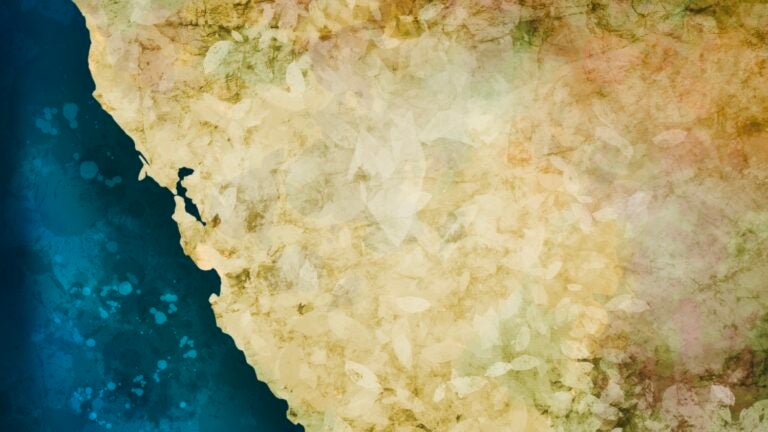
The West on Fire
This season explores the West’s relationship with fire, and how it has shaped both our past and present. Topics include fire practices in Indigenous communities, the history of Black firefighters in Los Angeles, smoke and urban air quality, farmworker community health during wildfires, post-wildfire debris flow, the origins and endurance of Smokey Bear, incarcerated firefighters, and more. Season 1 of Western Edition is produced by Avishay Artsy, Katie Dunham, Jessica Kim, and Elizabeth Logan.
Image: NASA/GSFC/LaRC/JPL, MISR Team
Prologue
Amidst the most catastrophic fires the North American West has ever experienced comes a new podcast from the Huntington-USC Institute on California and the West (ICW). Host William Deverell introduces this season exploring the legacy and calamity of wildfire in the Western U.S.
The West on Fire: Prologue
How can we better live with fire?
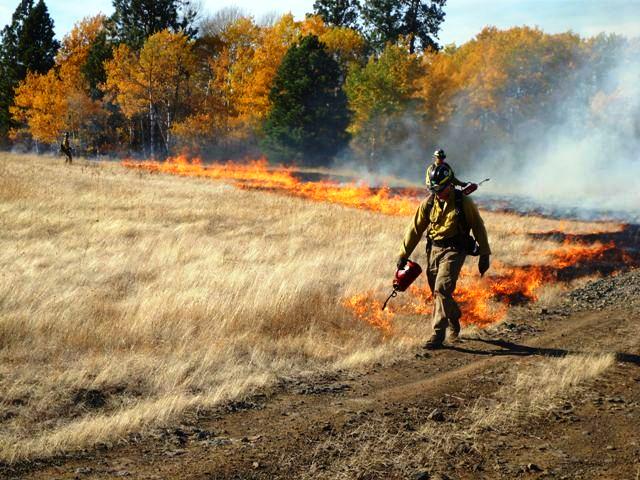
Episode 1: Black Firefighters in L.A.
Firefighters have a hard job. Whether they’re putting out housefires or battling large-scale wildfires, the work can be grueling, dangerous, and thankless. Imagine having to deal with racism and bigotry on top of all that. Los Angeles firehouses were segregated until the 1950s, and the work to overcome racism on the force continues to this day. In this episode, we meet members of the Stentorians, a fraternal organization that focuses on recruiting, training, and connecting Black firefighters, in both the city and county of Los Angeles; the team behind L.A.’s African American Firefighter Museum on South Central Avenue; and we hear about the legendary Arnett “The Rookie” Hartsfield, Jr., who helped lead the battle to integrate the Los Angeles Fire Department. Episode released on September 7, 2021.
The West On Fire: Black Firefighters in L.A.
I do have a duty to not be just a basic firefighter.
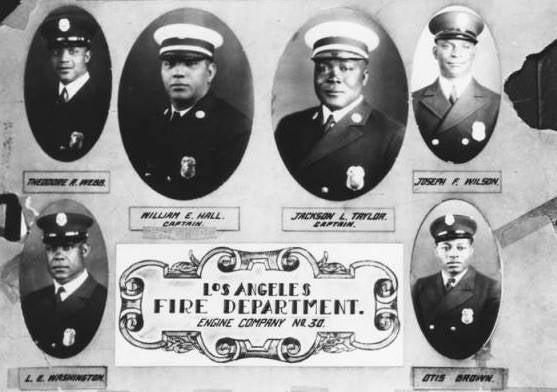
Episode 2: Smokey Bear
“Remember, only you can prevent forest fires.” Generations of Americans have this fire safety adage emblazoned on their collective memory thanks to Smokey Bear (often mistakenly called Smokey the Bear). Smokey Bear is the longest-running public service announcement in U.S. history. A large, friendly, bare-chested bear in denim jeans and a campaign hat, asking you to prevent forest fires, he is universally beloved…almost. In this episode, we get to know the bear himself. Where did he come from? How did he and his message spread like, well, wildfire? How did he become a beloved children’s character, a working-class hero, a guardian of nature, a countercultural icon, and a symbol of government overreach, all in one? And what’s it like to dress up in a Smokey Bear costume? Episode released on September 14, 2021.
The West On Fire: Smokey Bear
A large friendly bare-chested bear in denim jeans and a forest ranger hat, asking you – imploring you – to prevent forest fires. Smokey Bear is the longest-running public service campaign in U.S. history. He’s universally beloved. Well, almost.
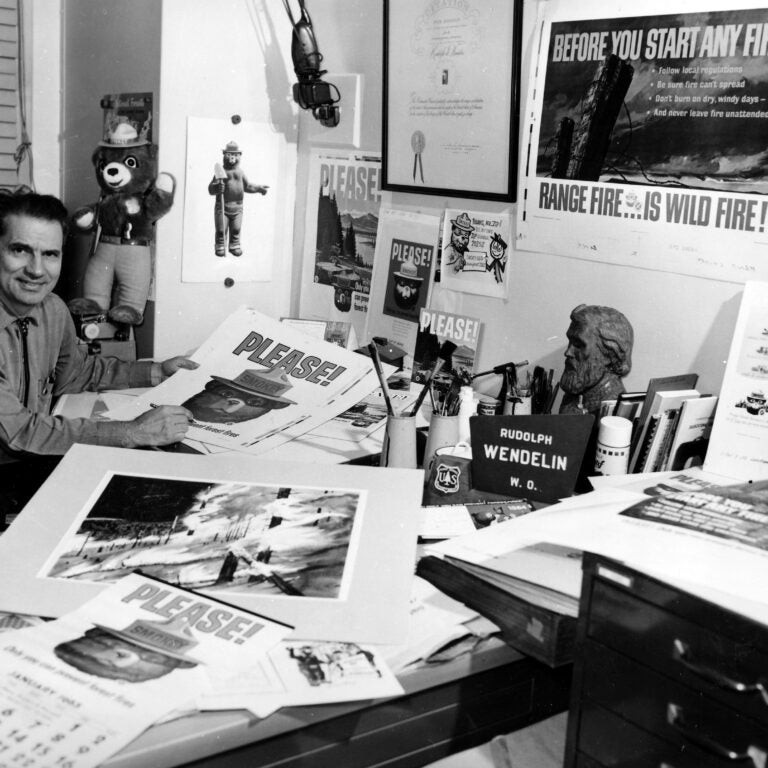
Episode 3: Debris Flow
Fires can be terribly destructive forces of nature, wiping out entire communities, as we’ve seen so often these past few years. But the destruction doesn’t stop when the fires go out. Fires can leave hillsides denuded. Foothill communities no longer have the trees and roots to protect them from the rocks and mud that flow down from the mountains after it rains. That’s what happened in Montecito, a community on the eastern edge of Santa Barbara, in early January 2018. In this episode, we learn about the phenomena of post-fire debris flow and mudslides and hear a first-hand story of the incredible wreckage it can cause. Episode released on September 21, 2021.
The West On Fire: Debris Flow
Fires can leave hillsides denuded. Foothill communities no longer have the trees and roots to protect them from the rocks and mud that flow down from the mountains after it rains.
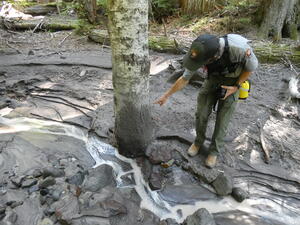
Episode 4: Good Fire
The gospel of fire safety in the Western U.S. has long been one of suppression: fires are bad and they should be avoided at all costs. But Indigenous communities in the West see things differently. In this episode, we talk to Indigenous tribal leaders who engage in controlled burns: carefully controlled fires intentionally set as a way of managing ecosystems, by burning the undergrowth and dead trees that would otherwise fuel wildfires. It’s become a sensitive debate, in which fire management officials have often gone up against Indigenous practices. We’ll also explore how our current views of fire were formed in the West. Episode released on September 28, 2021.
The West On Fire: Good Fire
Traditional Ecological Knowledge teaches us that we need to do prescribed burns or cultural burns…To maintain the health of the land, to eliminate debris buildup, to create pathways for animals, you know, for humans.
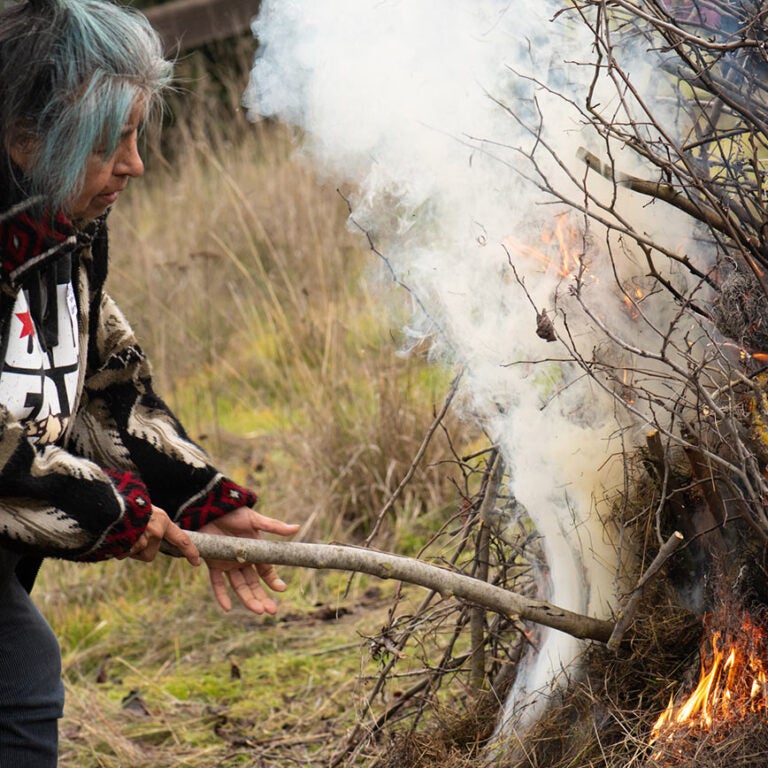
Episode 5: Smoke and Farmworkers
Wildfire smoke can spread far beyond the fire itself, and the toxic pollutants carried in the smoke can be deadly. In this episode, we investigate the harm posed by wildfire smoke and exactly what happens to our bodies when we’re inhaling wildfire smoke, including triggering or worsening other health problems. We’ll also learn about how migrant farmworkers are especially at risk — due to the nature of their outdoor work, pesticide exposure, and lack of Indigenous language translation — and the efforts to reduce their vulnerability. Episode released on October 5, 2021.
The West On Fire: Smoke and Farmworkers
Farmworkers spend long days outdoors, in the heat, breathing in dangerous particles spread by smoke from wildfires.
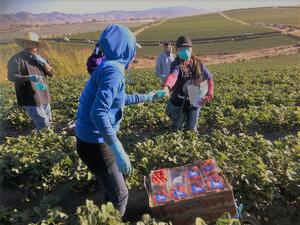
Episode 6: Incarceration and Firefighting
There’s a good chance that the firefighter saving you from a wildfire is actually an incarcerated person. As of summer 2021, about 1,600 work at conservation camps, also called fire camps, in California. These are minimum-security facilities staffed by incarcerated people who both volunteer and then qualify for the program based on their conviction offenses and behavior in prison. Other incarcerated persons serve at institutional firehouses. Once they finish serving their sentences, some might continue on to a training and certification program at the Ventura Training Center in Ventura County, or the The Forestry and Fire Recruitment Program. In this episode, we consider how much we all owe these firefighters and hear about two programs to help them find work – and a renewed sense of purpose – in fighting fires after they finish their sentences. We also speak with Jaime Lowe, author of Breathing Fire: Female Inmate Firefighters on the Frontlines of California’s Wildfires. Episode released on October 12, 2021.
The West On Fire: Incarceration and Firefighting
Being from Los Angeles, being from Altadena, the mountains are in my backyard. And I never knew about becoming a wildland firefighter until I was incarcerated.
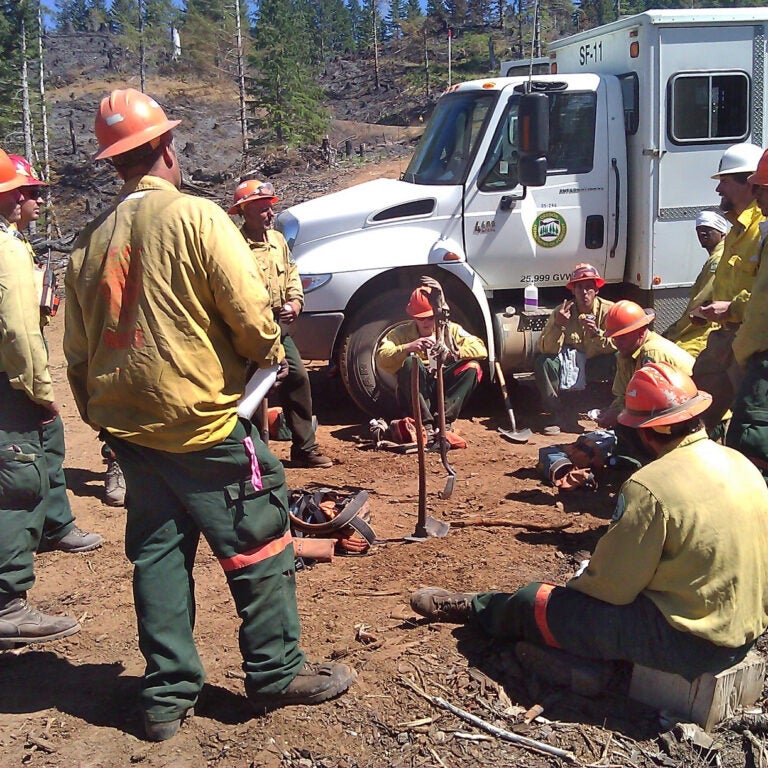
Episode 7: Climbing the Tower
For over a century, the U.S. Forest Service has posted fire lookouts at the tops of mountains and trees: men and women who gaze out at the horizon, watching and waiting for signs of smoke, and serving as the eyes for the fire crews who go out to battle the blazes. In this episode, we talk to Philip Connors, who keeps watch over one of the most fire-prone forests in the country: the Gila National Forest in New Mexico. Every summer, for nearly two decades, he sits in a tiny cabin at the top of a fire lookout tower, with his binoculars, maps and notebooks, standing guard. That experience formed the subject of his book, Fire Season: Field Notes from a Wilderness Lookout. We also talk to science historian Jameson Karns about the origins of fire towers and their place in American culture; and to Vincent Ambrosia, a research scientist who works with NASA to improve wildfire monitoring. Episode released on October 19, 2021.
The West on Fire: Climbing the Tower
Every summer, for nearly two decades, he sits in a tiny cabin at the top of a fire lookout tower with his binoculars, maps and notebooks, standing guard.